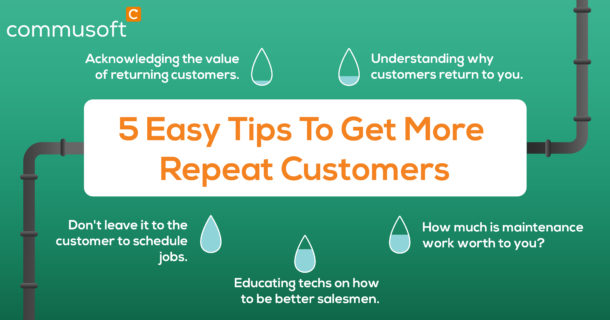Any business needs stable finance to succeed. A capital management company that can help them power through difficult economic times, invest in opportunities to grow, and survive the long game. Financial stability is not a natural gift, it takes meticulous planning, savings in moderation; and wise use of your money. This post takes you through nine actionable Read more
customer retention

Any business needs stable finance to succeed. A capital management company that can help them power through difficult economic times, invest in opportunities to grow, and survive the long game. Financial stability is not a natural gift, it takes meticulous planning, savings in moderation; and wise use of your money. This post takes you through nine actionable tactics that will help your business fortify its financial standing while pursuing long-range development.

1. Create a Comprehensive Budget
The heart of Financial Well-being belongs to a well-crafted budget. Start with examining the income, fixed costs, and variable expenses of your business. Consider everything else including savings, emergency funds, and growth investments. Make your budget a living organ that needs attention so you can always tell how much of your income is used and what goes into your pocket.
Review it regularly in order not to be outdated with the way money flows through your wallet or account; An intricately built-out budget not only empowers you to maintain daily expenditures but also highlights the areas where you could potentially cut back on unnecessary expenses and reallocate your resources more effectively.
2. Prioritize Emergency Savings
One of the simplest ways to increase financial stability during unexpected events is by setting up an emergency fund. Times of economic decline, supply-chain hiccups, or immediate equipment breakdowns can be costly. Try to stash away three to six months of your operating costs in a bank account. With an emergency fund, you are in a position to pay for any essential expenditure without getting into debt which means your business has the freedom to pivot and rebuild.
3. Streamline Operational Costs
Streamlining operational costs is a pivotal strategy in achieving financial stability for sustainable business growth. Begin by analyzing all aspects of your operations to identify inefficiencies and unnecessary expenditures. Implement automation tools such as accounting software, project management platforms, or customer relationship management (CRM) systems to improve productivity and reduce human error. Evaluate supplier contracts to negotiate better rates or consider alternative vendors that offer competitive pricing without compromising quality.
Additionally, optimize energy consumption by upgrading to energy-efficient equipment, reducing utility expenses while supporting sustainability goals. Regularly review expenses to eliminate redundant processes or services that do not contribute to your core objectives. Embracing a leaner approach to operations not only saves money but also allows you to reallocate resources to more impactful areas, such as innovation or marketing. Streamlining operational costs ensures your business remains competitive and financially resilient in a dynamic market.
4. Invest in Energy Efficiency
Sustainability goal with incentives, potentially saving on utility costs through energy efficiency. Installing energy-efficient lighting, insulation, and appliances can help you save a lot of money over time on your utilities. Businesses with a lot of property, are responsible and should look into buying either the Commercial Heating and Air system, which is made to hold up great during use.
With regular maintenance, HVAC systems can perform at their highest efficiency which keeps energy costs lower over time. These investments reduce your spending on utilities, along with which they also provide a benefit to the environment.
5. Optimize Inventory Management
Proper inventory management is another key component of financial health. Not keeping enough inventory will cause you to refuse sales that could have been made, whereas flooding your warehouse with too much stock means the capital is tied up and significant storage costs.
You can use inventory management software to monitor stock levels, forecast demand, and automate reorder processes. This will not only minimize waste but also help you optimize resource allocation — especially equipment, facilities, and labor.
6. Focus on Customer Retention
It can be more cost-effective to retain an existing customer than it is to acquire a new one. Create plans to retain customers over the long term with superior customer service, loyalty programs, and personalized communications.
Repeat customers generally have a higher customer lifetime value than non-repeaters who also come back for more and they are in effect, earning their business through neither paid advertising nor advertising at all. By putting retention first you will also be able to create revenue stability and long-term dedicated customers.
7. Utilize Tax Write-Offs and Deductions
Reduce taxes through tax credits, deductions, and incentives. Speak with a tax professional to help you find breaks that are relevant to your business, whether it be savings from energy-efficient upgrades or employee training programs as well as research and development costs. By keeping tabs on tax laws you can figure out how to reduce costs or build your business with the savings.
8. Create a Scalable Business Model
Growth cannot be sustainable without scalability. Architect your business so those operations can scale up without costlier scaling on the backend. For example, as you are transitioning to the cloud it keeps your investment in infrastructure down the next time scale required because of business growth. A scalable model grows with the company, easing financial strain during an expansion so your business remains profitable even through growth seasons.
9. Monitor Financial Performance Regularly
Track your financial performance—stability cannot be achieved without consistency. Evaluate your financial health monitoring Performance (): Use key performance indicators (KPIs) like profit margin, cash flow, and return on investment OUR (()). Doing regular financial reviews helps you see trends, catch potential issues early on, and make educated decisions. This tool can keep you nimble with your finances so when changes come a prospecting, you can move quickly.
In conclusion, creating financial stability is an art and a science. Save aggressively, optimize your processes, and only spend on what is necessary to prosper during any economic circumstances. Place your business on solid financial ground, so you are prepared for anything and everything that may lie ahead of it; which is not to mention ensuring its long-term success. With the right action plan, steady commitment, and some strategic investment for good luck on your side; you will maintain a quickly even keel condition of being able to thrive yet not just survive at business.

The plumbing industry has grown steadily by 2.1% since 2017. This makes it one of the most actively growing industries in the US. By January 2022, there were 129,517 plumbing businesses operating in the US, which is likely to increase by 2023. However, running a plumbing business can be as challenging as any other establishment Read more
The plumbing industry has grown steadily by 2.1% since 2017. This makes it one of the most actively growing industries in the US. By January 2022, there were 129,517 plumbing businesses operating in the US, which is likely to increase by 2023. However, running a plumbing business can be as challenging as any other establishment. Although it has peculiar problems, some general business solutions can be applied. Here are some common problems to be aware of.

Difficulty in customer retention
Like any other entity, repeat business for plumbing works often depends on client satisfaction. When the customer is dissatisfied with the work done, the likelihood of hiring another plumbing company is higher. This makes customer retention a huge challenge for plumbing businesses. According to an IBIS World survey on this issue, three out of five customers are likely to try another plumber. It further reported that this often happens when the customer or client is unhappy with a previous job.
Indeed, it is a very competitive industry with high customer expectations. So, if you’re struggling with customer retention, perhaps, it will be worthwhile to assess your services. For example, do you frequently attract people with unbelievable discounts and offers? If that is the case, you may rather be putting potential clients off. Those unbelievable discounts may be interpreted as sub-standard service. Furthermore, do you have hidden charges only known to the customer after the job is done? Once again, if you answered in the affirmative, it may be time to review that strategy. Many things often account for why your plumbing business cannot retain customers. However, when you identify those loopholes, things could turn around for the better.
Problems with pay systems
A fundbox.com survey stated that 50% of plumbers face cash flow problems. This, however, applies mostly to licensed freelance plumbers as those who work as employees for companies often do not experience this problem. It is even worse for plumbing businesses with multiple branches in different locations. It takes a lot of effective management skills to handle so many workers in different locations. Without it, your business may struggle with making timely payments, among other things. You will need an effective payroll system to avoid any delays. Moreover, because many plumbing companies pay their workers on a commission basis, this is necessary.
Non-existent or poor target marketing
First of all, it’s already been established that the plumbing sector is highly competitive. For whatever reason, it’s been discovered that some plumbing businesses fail to work on effective marketing. The truth here is that people do not seek information about plumbing businesses until they’re in dire need of one. However, if your target marketing is done right, you will have clients calling for routine plumbing checks.
Target marketing involves studying the demographic of your business’ location. If it is mainly a residential area, your marketing can focus on homeowners living in really old properties. The reason is that old houses often have hidden plumbing issues usually discovered when things get out of hand. By positioning your business as the go-to plumber, you increase your business’s chances of receiving more calls for old home jobs.
With proper planning and effective strategies, most of these problems can be avoided in your plumbing business. No business operates without glitches. However, what you do to avoid or minimize them can influence your success.

It’s every business’ dream to have as many streams of incoming revenue as possible. New customers generally make the bulk of a plumbing business’ revenue but with diversification on many people’s minds nowadays, perhaps it’s time to take a look at some alternatives. What’s one that immediately comes to mind? Repeat customers, of course! Acknowledging Read more
It’s every business’ dream to have as many streams of incoming revenue as possible. New customers generally make the bulk of a plumbing business’ revenue but with diversification on many people’s minds nowadays, perhaps it’s time to take a look at some alternatives. What’s one that immediately comes to mind? Repeat customers, of course!
Acknowledging the value of returning customers
The first step is acknowledging the actual value of customer loyalty. I’m positive you’ve never thought to yourself “I hate loyal customers”; after all, it’s no doubt a good thing to have people choosing to hire you again and again: wear it like a badge of honor! But just because you’re happy about that, it doesn’t necessarily mean you’re properly appreciating the value that these repeat customers provide your business with.
From a statistical point of view, retaining customers is up to 5 times cheaper than acquiring new ones. Returning customers also spend more: up to 300%! That’s a whole lot of value to be taking more seriously, which means strategizing how you can retain even more customers is important, too.
Equally, it helps to keep things in perspective; your plumbing business might be different, so it’s important to sit down with your own numbers and see if they do, in fact, match up to this potential.
Regardless, thinking up strategies to boost your returning customer rate is never going to hurt: even a little can go a long way. If there’s one thing we’ve learned from 2020 it’s that keeping your eggs in the same basket is not ideal, so having diverse streams of income is always a good idea.

Understanding why customers return to you
“Because I did a great job!” is the most natural answer to this question and oftentimes it’s also the right one. But, with competition in the plumbing industry being what it is nowadays, it’s hubris to say that you’re the only plumber in town who can do a good job.
If we’re going to be honest about it, most customers have a hard time telling an average job from a great one. As long as nothing breaks down for a reasonable number of days and there isn’t a massive mess, they won’t think twice about it.
To push the example, check out your own reviews and those of a competitor, then count how many times “great customer service”, “convenient”, “easy to communicate with” and other such phrases are mentioned. Then compare the number against how often “my hot water booster installation was a work of art” shows up.
It’s not the big things you do, but more often the run-of-the-mill details – like sending email confirmations and having techs wear polo shirts – that often make the biggest impact. Some other tips to get more repeat customers (and positive reviews) would be:
- 24/7 availability with the help of an online booking portal
- Keeping customers in the loop with automatic email/text notifications
- Sharing technician arrival times & tracking info so they’re not taken by surprise
- Training your techs & admin to always be presentable and make a good impression
- Sending feedback requests after the work is done
How much is maintenance work worth to you
Servicing appliances isn’t high up on anyone’s list of favorite jobs. It’s mundane, presents little to no challenge, and doesn’t seem to bring in much profit. The latter isn’t difficult to fix – if you use your net profit per hour to set prices instead of gross margins, every job will be a (highly) profitable job.
Regularly servicing appliances helps ensure that they work properly, don’t use up more electricity than they should, and that they last longer. Not to mention it helps avoid dangerous malfunctions that people might not even be aware of. These are all reasons to inform your customers and sell them on a service deal.
This can even work as a sales strategy, where you offer a “subscription plan”. Instead of charging them, say, $164.99 next year, when you come for the maintenance check, they can pay $13.75/month and have a technician available to them at all times for free check-ups and advice. $13.75/month might sound like change, but rack up 50 of these 30-minute jobs, and you’ve got almost $700/month guaranteed for only 25h of work!
Educating techs on how to be better salesperson
A technician’s priority is to do a great job – that’s always going to be true. But they’re also oftentimes the only face-to-face interaction customers have with your plumbing business. The level of trust they’re afforded shouldn’t be taken for granted, which means that pushy sales techniques and tactics don’t have a place in this situation. This being said, a technician can always learn to judge a situation on their own and make recommendations accordingly.
Whether it’s by presenting an additional product (where you can earn a mark-up if you have a good vendor relationship that affords you reduced rates) or a subscription like the one above, they’re in an unique position to make a great impression and help customers decide on hiring you again in the future.
Another way they can help the business is by using a quoting tool to show multiple options for a future project the customer might be interested in. This is the good, better, best approach also known as bronze/silver/gold service. Studies show that people rarely go for the cheapest option when they’re presented with 3 prices; you’re almost guaranteed that they pick the middle, or even the premium one.
Don’t leave it to the customer to schedule your jobs
And speaking of that future project (or maintenance work for that matter): you can’t rely on the customer to call you again. Sure, it’s great that some do, but for the most part and especially for that lucrative service work, people follow a “if it ain’t broke, why fix it” mentality. Chances are they won’t book a job until something breaks down.
This is why sending regular service reminders is essential. Not only does it give them a little nudge, but if you time them right (or better yet, schedule them in advance), they can also help the customer feel like they’re getting a more personalized treatment, seeing how you “remembered” when their appliance was due a check-up.
If you need a few more ideas, this is a complete guide to service reminders.
Simply keeping in touch with customers is essential and I don’t just mean sending them discounts or brochures. If you do decide to commit to a newsletter or regular emails, it’s best to try and keep it engaging. It does take more effort, but don’t overthink it; high production values are overrated. Relatability and being down-to-earth is a lot more valuable so the odd DIY tutorial on how to do an easy fix or some insight from the business (a “Get to know your plumber!” sort of thing) will go a lot further in establishing a long-lasting relationship.
The takeaway
All in all, earning customer loyalty means being great at what you do and having an eye for the kind of details that make a difference. As you grow your plumbing business, it can get more difficult to keep track of everything, from scheduling to payments to customer service.
Digital tools are already a mainstay of our everyday lives and Commusoft is one that strives to make remarkable customer journeys a breeze for any contracting business. If you’re looking to learn more, check out our Customer Journeys page.
 Guest Blogger: Cristina Maria is a Marketing Executive at Commusoft, a job management software company, where she helps educate and empower field service businesses to deliver a remarkable customer experience.
Guest Blogger: Cristina Maria is a Marketing Executive at Commusoft, a job management software company, where she helps educate and empower field service businesses to deliver a remarkable customer experience.
